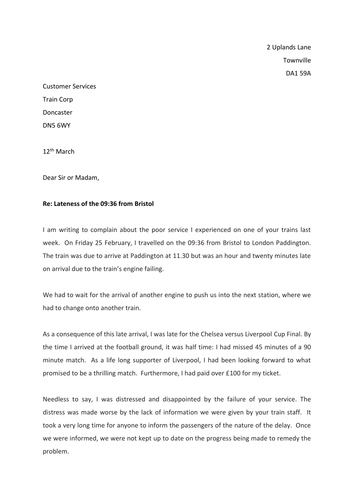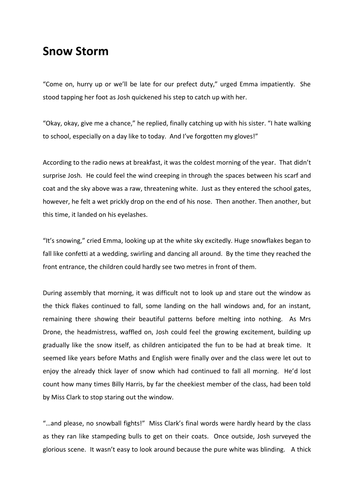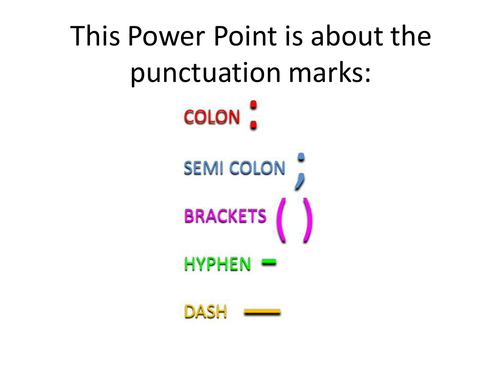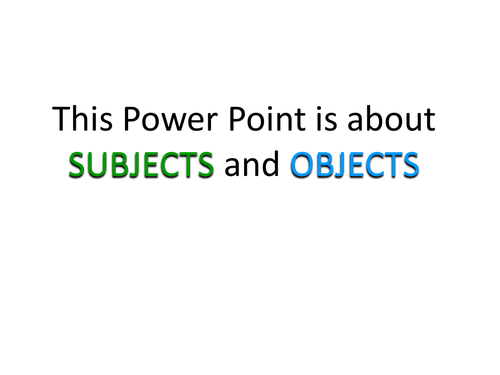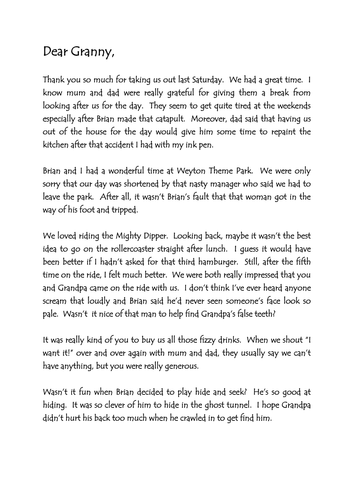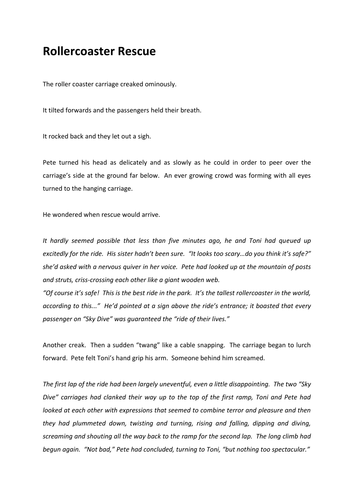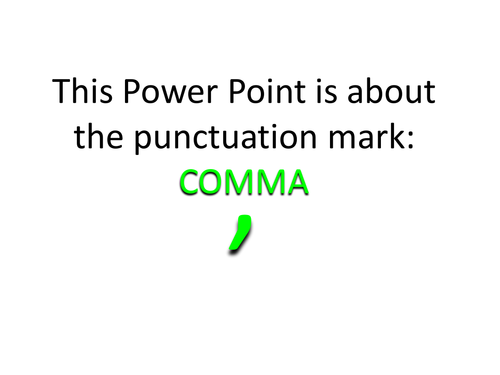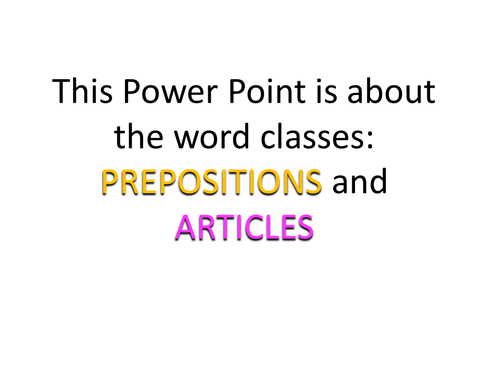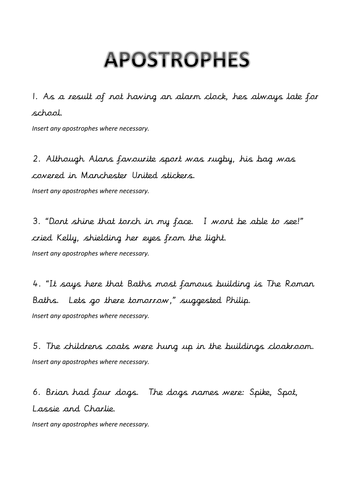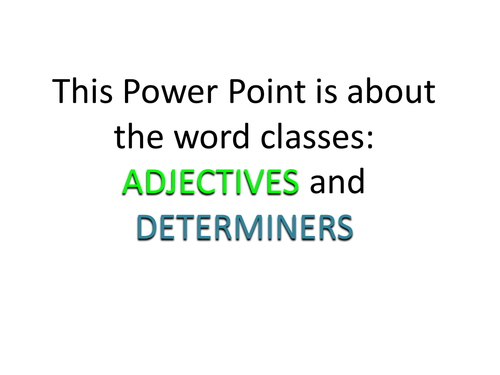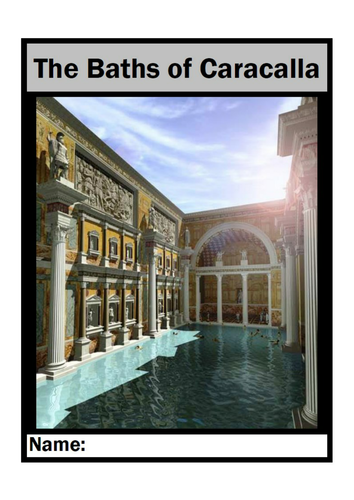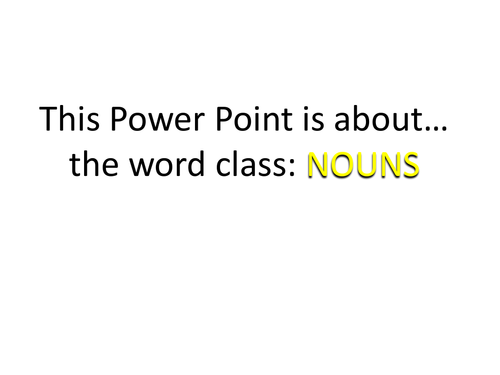
27Uploads
29k+Views
6k+Downloads
All resources

Formal Letters of Complaint
Six letters of complaint. These could be used to teach formal language, paragraphing, using cohesive devices (e.g. connectives) etc. Good models for Year 6 ‘greater depth’ writers.
Letters about…
1 Delayed Train
2 Litter on street
3 Problems at a pizzeria
4 Problems at a fast food restaurant
5 A disappointing day at a theme park
6 Poor service at a toy shop

Grammar and Punctuation Revision Game
A simple but effective game which revises different parts of grammar and punctuation.
Pupils play in teams. They choose an area (eg verbs) from the game board. The PowerPoint will throw up a question about the chosen area and reveal the answer when clicked.
This activity can easily last a whole one hour lesson. Pupils enjoy the competitive element. It can be used as a ‘fun’ way to revise grammar terminology in preparation for the KS2 SATs.
Categories in the game: verbs, connectives, adverbs, subject and object, names for words (eg plural, antonym), prepositions and articles, adjectives and determiners, apostrophes, various punctuation.

Maths Revision Game
A simple but effective game which revises different topics in maths.
Pupils play in teams. They choose an area (eg ratio) from the game board. The PowerPoint will throw up a question about the chosen area and reveal the answer when clicked.
This activity can easily last a whole one hour lesson. Pupils enjoy the competitive element. It can be used as a ‘fun’ way to revise maths in preparation for the KS2 SATs.
Categories in the game: calculation, reading scales, algebra, perimeter, area, angle, fractions, decimals, percentages, data handling (pie charts, line graphs), measure, co-ordinates etc.

Narrative Writing: Snow Expedition
The staff and pupils in a school have been snowbound after a heavy storm. A group of students and teachers decide to go out to search for help…
A short narrative which could be used for guided or shared reading or as a modelled text to highlight or teach different objectives (see teaching points below).
Teaching Points:
GRAMMAR: past tenses, including past perfect; fronted adverbials (lots of these, especially +ing verb starts); adjectives and adverbs for descriptive detail; connectives (contrast and time); relative clauses
PUNCTUATION: commas around clauses
STRUCTURE: paragraphing, including short paragraphs and sentences for dramatic effect; balance of action, dialogue and setting
CONTENT & THEME: adventure, rescue, overcoming fear; character; figurative language (simile, metaphor)

Narrative Writing: Snow Storm
The snow begins to fall as two children walk to school…
A short narrative opening (2 pages) with an emphasis on setting. It could be used for guided or shared reading, as a modelled text or as a prompt for students to continue.
Teaching Points
GRAMMAR: past tenses; fronted adverbials; adjectives and adverbs for descriptive detail; connectives (contrast and time); relative clauses; 3rd person narration
PUNCTUATION: commas around clauses; exclamation and question marks; speech marks; ellipsis
STRUCTURE: paragraphing (opening, build-up, events, resolution); balance of action, dialogue and setting
CONTENT & THEME: setting based opening; character; figurative language (simile, metaphor, personification)

Punctuation Explained: Semi colon, colon, hyphen, dash, brackets
A Power Point which explains the function of semi colons, colons, hyphens, dashes and brackets.
A task sheet with questions about these marks. An exercise for students to complete after the presentation. Answers are included.
You can purchase the whole set of these Power Points (11 in total) about different grammar points or punctuation marks. It’s a resource called ‘Grammar & Punctuation Explanations’. There’s also a whole set of task sheets like the one here with each exercise corresponding to the Power Point. It’s called ‘Grammar & Punctuation Exercises’.

Punctuation Explained: Full Stop, Question & Exclamation Marks, Ellipsis
A Power Point which explains the function of the full stop, question mark, exclamation mark and ellipsis.
A task sheet with questions about those marks. An exercise for students to complete after the presentation. Answers are included.
You can purchase the whole set of these Power Points (11 in total) about different grammar points or punctuation marks. It’s a resource called ‘Grammar & Punctuation Explanations’. There’s also a whole set of task sheets like the one here with each exercise corresponding to the Power Point. It’s called ‘Grammar & Punctuation Exercises’.

Grammar Explained: Subject, Object and Passive Voice
A Power Point which explains the role of subjects and objects in a sentence and the form of passive and active voice…
A task sheet with questions about recognising subjects and objects in a sentence. An exercise for students to complete after the presentation. Answers are included.
You can purchase the whole set of these Power Points (11 in total) about different grammar points or punctuation marks. It’s a resource called ‘Grammar & Punctuation Explanations’. There’s also a whole set of task sheets like the one here with each exercise corresponding to the Power Point. It’s called ‘Grammar & Punctuation Exercises’.

Texts with a sarcastic or unreliable narrator
Letters written in a sarcastic tone or with an unreliable narrator. The reader must “read between the lines” to understand what is really being said. There is a short text and a corresponding set of comprehension questions.
These texts might be useful if you were working on tone, narrator voice or character, the manipulation of the reader, or the use of humour, sarcasm or insincerity in writing. Good models for ‘greater depth’ writers.

Narrative Writing: Peril in Pompeii
A Roman slave witnesses the eruption of Mount Vesuvius. Will he escape in time?
A short narrative (2+ pages) which could be used for guided or shared reading or as a modelled text to teach a variety of objectives (see Teaching Points below). The story has dialogue which conveys character and advances the action of the story and includes informal contractions -key objectives for Year 6 pupils to meet ‘at expected’.
Teaching Points
GRAMMAR: past tenses; fronted adverbials; adjectives and adverbs for descriptive detail; connectives (contrast and time); relative clauses; 3rd person narration
PUNCTUATION: commas around clauses; exclamation and question marks; speech marks
STRUCTURE: chronological; paragraphing (opening, build-up, events, resolution); balance of action, dialogue and setting
CONTENT & THEME: build up of suspense; historical fiction; character; figurative language (simile, metaphor, alliteration)

Narrative Writing: Rollercoaster Rescue
Pete and his sister are stranded on the top of a rollercoaster ride; their carriage hangs precariously at the top of the slope. Will they be rescued in time?
A short narrative (4 pages) which could be used for guided or shared reading or as a modelled text. The story uses flashbacks which might work as a good model for ‘greater depth’ writing. See Teaching Points below.
There is also an annotated text which highlights the following:
Teaching Points:
GRAMMAR: past tenses (including past perfect); fronted adverbials; adjectives and adverbs for descriptive detail; connectives (contrast and time); relative clauses; 3rd person narration
PUNCTUATION: commas around clauses; exclamation and question marks; speech marks; ellipsis; dashes; semi-colons
STRUCTURE: paragraphing, including short paragraphs and sentences for dramatic effect; use of flashback; balance of action, dialogue and setting
CONTENT & THEME: disaster/rescue/bravery; character (brother-sister); resolution links with opening; rhetorical questions; figurative language (similes)

Snow Day: Snowbound Texts
After a heavy snowstorm, staff and students at a school have been forced to spend the night, entirely cut off from the outside world…
Here are 5 texts which describe the experience:
It’s Snowing!: a story describing the the reaction of students as the snow begins to fall at school.
Night: a poem describing the atmosphere as students try to sleep in a classroom.
A Search Party: a discussion text outlining arguments for and against sending out a search party to look for help.
Expedition: an action story in which a search party attempt to brave the outside.
Safe at Last!: a news report detailing the rescue of the staff and students.
All brilliantly illustrated by Nick Hilditch
These texts could be used in a variety of ways:
exploring and comparing different text types or genres;
texts for whole class or guided reading;
the basis of reading comprehensions;
modelled texts for students’ own writing.
Language features:
Narrative Writing: past tenses, including past perfect; fronted adverbials; adjectives and adverbs for descriptive detail; coherence; relative clauses; commas around clauses; semi-colons; colons; ellipsis; inverted commas; paragraphing, including short paragraphs and sentences for dramatic effect; balance of action, dialogue and setting; themes of adventure, rescue, overcoming fear; character description; figurative language (simile, metaphor).
Poetry: metaphor; figurative language; personification; contrasts; patterns; alliteration; repetition.
Discussion: formal writing; direct address; objectivity; quotations; sentence adverbs; punctuation range.
News Report: layout; report structure; direct and reported speech; formal language.

Punctuation Explained: Commas
A Power Point which explains the function of commas.
A task sheet with questions about commas. An exercise for students to complete after the presentation. Answers are included.
You can purchase the whole set of these Power Points (11 in total) about different grammar points or punctuation marks. It’s a resource called ‘Grammar & Punctuation Explanations’. There’s also a whole set of task sheets like the one here with each exercise corresponding to the Power Point. It’s called ‘Grammar & Punctuation Exercises’.

Grammar Explained: Prepositions and Articles
A Power Point which explains the function of prepositions and articles.
A task sheet with questions about prepositions and articles. An exercise for students to complete after the presentation. Answers are included.
You can purchase the whole set of these Power Points (11 in total) about different grammar points or punctuation marks. It’s a resource called ‘Grammar & Punctuation Explanations’. There’s also a whole set of task sheets like the one here with each exercise corresponding to the Power Point. It’s called ‘Grammar & Punctuation Exercises’.

Punctuation Explained: Apostrophes
A Power Point which explains the function of apostrophes.
A task sheet with questions about apostrophes. An exercise for students to complete after the presentation. Answers are included.
You can purchase the whole set of these Power Points (11 in total) about different grammar points or punctuation marks. It’s a resource called ‘Grammar & Punctuation Explanations’. There’s also a whole set of task sheets like the one here with each exercise corresponding to the Power Point. It’s called ‘Grammar & Punctuation Exercises’.

Grammar Explained: Verbs
A Power Point which explains the function of verbs.
A task sheet with questions about verbs. An exercise for students to complete after the presentation. Answers are included.
You can purchase the whole set of these Power Points (11 in total) about different grammar points or punctuation marks. It’s a resource called ‘Grammar & Punctuation Explanations’. There’s also a whole set of task sheets like the one here with each exercise corresponding to the Power Point. It’s called ‘Grammar & Punctuation Exercises’.

Grammar Explained: Adjectives and Determiners
A Power Point which explains the function of adjectives and determiners.
A task sheet with questions about adjectives and determiners. An exercise for students to complete after the presentation. Answers are included.
You can purchase the whole set of these Power Points (11 in total) about different grammar points or punctuation marks. It’s a resource called ‘Grammar & Punctuation Explanations’. There’s also a whole set of task sheets like the one here with each exercise corresponding to the Power Point. It’s called ‘Grammar & Punctuation Exercises’.

Report Booklet: The Roman Baths of Caracalla
A 16 page non-chronological report booklet on the Roman Baths of Caracalla in Rome.
It contains a report, pictures, a map and several question pages.
It could be printed out as a pamphlet for students to use as a guided reading resource or when studying non-chronological reports.
Teaching Points:
GRAMMAR: past and present tenses; direct questions to the reader; relative clauses; complex sentences
PUNCTUATION: exclamation marks; questions marks; commas around clauses; brackets; semi-colons
STRUCTURE: paragraphs with sub-headings; labelled pictures and diagrams
CONTENT & THEME: historical report; specific vocabulary (eg Latin); persuasive language

Grammar Explained: Nouns
A Power Point which explains the function of nouns in sentences. It includes information on different types of noun (common, proper, abstract, concrete, collective).
A task sheet with questions about nouns. An exercise for students to complete after the presentation. Answers are included.
There is a whole set of these Power Points (11 in total) about different grammar points or punctuation marks. It's a resource called 'Grammar & Punctuation Explanations'. There's also a set of task sheets like the one here with each exercise corresponding to the Power Point. It's called 'Grammar & Punctuation Exercises'.

Fractions Simplification Game
A simple but effective game which teaches and revises various aspects around simplifying fractions.
Pupils play in teams. They choose a category from the game board. The PowerPoint will throw up a question about the chosen area and reveal the answer when clicked.
This activity can easily last a whole one hour lesson. Pupils enjoy the competitive element.
Topics covered in the game: fractions; simplifying; factors; multiples; prime numbers; explaining answers; reasoning problems.

